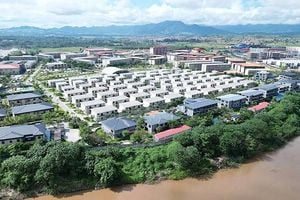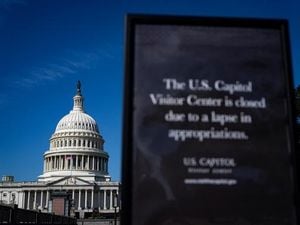On October 4, 2025, Pakistan marked a significant milestone in the global race for critical minerals by delivering its first-ever shipment of rare earth elements and other vital resources to US Strategic Metals (USSM) in the United States. This event, reported by PRNewswire and echoed across industry circles, signals not just a new chapter in US-Pakistan economic cooperation but also highlights the evolving complexities and risks in the critical minerals supply chain—an issue experts argue is far more nuanced than headlines about lithium or cobalt shortages might suggest.
The shipment, prepared and sourced entirely within Pakistan, included antimony, copper concentrate, and rare earth elements notably containing neodymium and praseodymium. These materials, essential for advanced manufacturing and energy production, are increasingly viewed as the backbone of the world’s electrification transition. According to PRNewswire, Pakistan’s natural resources are estimated at a staggering $6 trillion, positioning the country as one of the world’s richest in precious metals and rare earth minerals.
For many, this delivery is more than a commercial transaction; it’s a strategic maneuver in the high-stakes game of securing critical mineral supply chains. Stacy W. Hastie, CEO of USSM, captured the significance in a statement: “We see this as the first step in our exciting journey together with the Frontier Works Organisation (FWO) of Pakistan, to provide critical minerals to the United States and bolster economic trade and friendship between our two countries.”
This shipment follows a $500 million memorandum of understanding (MoU) signed in September 2025 between USSM and Pakistan’s FWO, a deal designed to deepen cooperation in the critical minerals sector. The MoU, as highlighted by the US Embassy, is “yet another example of the strength of the US-Pakistan bilateral relationship that will benefit both countries,” according to US Chargé d’Affaires Natalie Baker. The agreement is expected to pave the way for further economic and strategic engagement, potentially reshaping the global supply landscape for years to come.
USSM, based in Missouri, isn’t just any player in the minerals market. The company specializes in producing and recycling critical minerals, which the US Department of Energy has defined as essential for a host of technologies—ranging from electric vehicles and wind turbines to smartphones and advanced defense systems. With Washington’s growing emphasis on securing these resources amid geopolitical uncertainty, partnerships like the one with Pakistan are taking on new urgency.
But beneath the headlines about rare earths and multibillion-dollar deals lies a more complicated story. On the same day as the shipment, Michael Barnard published a widely discussed article dissecting the real risks in the global electrification transition. According to Barnard, the focus on primary metals such as lithium and cobalt is misplaced. “Primary metals, by their nature, have clearly defined markets, identifiable reserves, straightforward economic incentives, high substitutability and easy recycling pathways,” he writes. The real challenge, Barnard argues, comes from so-called by-product metals—elements like indium, gallium, germanium, tellurium, selenium, and certain rare earths—that are not mined directly but are instead recovered incidentally during the extraction of more common metals.
Why does this matter? Unlike lithium or cobalt, which have dedicated mining operations and robust market structures, by-product metals are produced in much smaller quantities and are heavily dependent on the production rates of their host metals. This means their supply is far less responsive to price signals or sudden surges in demand. If the world needs more tellurium or gallium for next-generation solar panels or semiconductors, boosting output isn’t as simple as opening a new mine; it often requires ramping up production of an entirely different metal, which may not make economic sense.
Barnard’s critique extends to widely cited scarcity models, which he argues “vastly overstate scarcity due to extreme and inaccurate assumptions and disregard of market-driven adjustments and innovation.” In other words, while headlines may scream about looming shortages of lithium or cobalt, the real bottleneck for the green transition may lurk in the shadows—among the less glamorous, but no less essential, by-product metals.
For policymakers and industry leaders, this distinction is crucial. The current wave of investment and diplomatic outreach—exemplified by the USSM-FWO partnership—risks missing the forest for the trees if it focuses too narrowly on primary metals. As Barnard puts it, “Understanding this difference is essential for stakeholders navigating the electrification transition, particularly in the face of recent supply chain shocks and geopolitical tensions.”
The strategic dimension of these mineral deals is hard to overstate. Earlier this month, Prime Minister Shehbaz Sharif, speaking to reporters in New York, revealed that former US President Trump had personally directed American companies to invest in Pakistan. “He instructed US companies to immediately go to Pakistan and discuss investment opportunities,” Sharif said, noting that several joint ventures had already been inked. The message is clear: US policymakers see partnerships with resource-rich countries like Pakistan as a hedge against potential supply disruptions and as a means to reduce dependence on rival suppliers.
Yet, the real test lies ahead. While Pakistan’s mineral wealth is vast, realizing its full potential will require overcoming logistical, regulatory, and environmental hurdles—not to mention the technical challenges of extracting and refining by-product metals. Moreover, the global market for critical minerals remains volatile, shaped by shifting alliances, trade restrictions, and technological breakthroughs that can upend demand forecasts overnight.
For now, the first shipment from Pakistan to USSM stands as a symbol of what’s possible when economic and strategic interests align. It’s a reminder that the electrification transition is about more than just batteries and electric cars; it’s about the intricate web of materials and partnerships that underpin the technologies of tomorrow. As countries and companies race to secure their place in this new order, understanding the true nature of supply risks—beyond the headline-grabbing metals—is more important than ever.
In the end, the story of critical minerals is one of both promise and peril. As the world moves ever closer to a low-carbon future, the ability to navigate these complex supply chains may well determine who leads—and who follows—in the decades to come.



